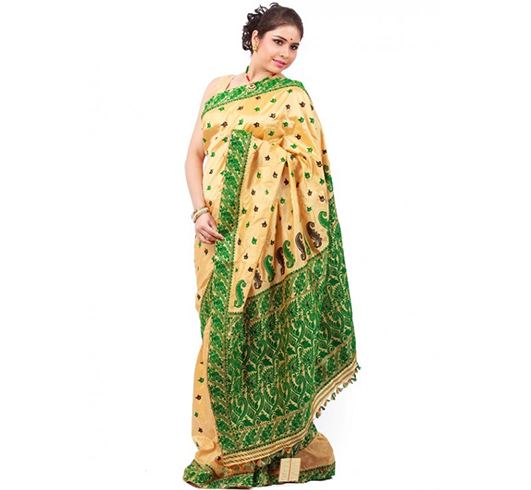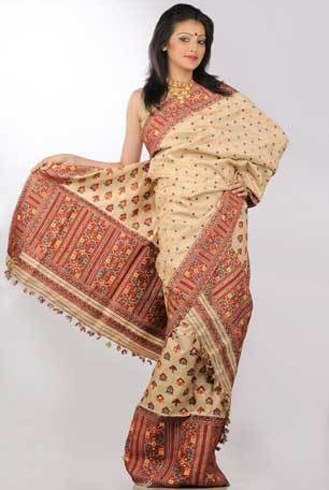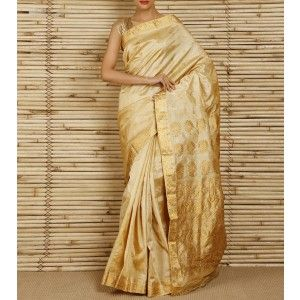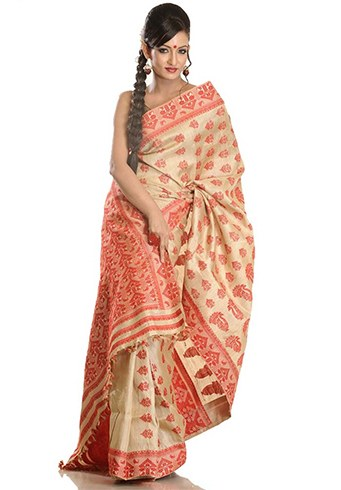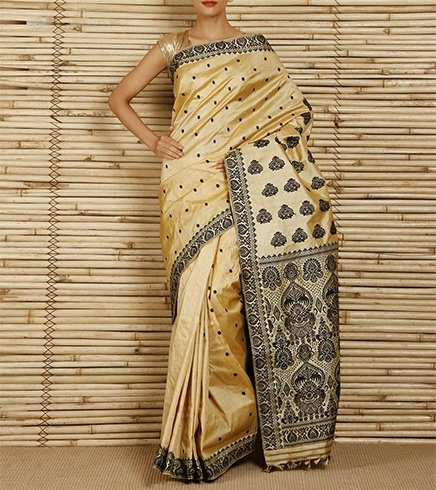Muga silk, from Assam, is one of the world’s rarest silks. It’s only made in Assam, and nowhere else. The fact that this Silk is completely golden yellow distinguishes it from all other varieties. In Assamese, the term muga means yellowish. It comes from the Muga Silkworm, which dates back to the dinosaur era and is so sensitive that it can’t accept even the tiniest amount of pollution. It’s created from Antheraea assamensis, a semi-cultivated silkworm. It’s all-natural and organic, with the strongest natural fiber.
It is the most expensive sort of Silk and is only used to make things for the most affluent customers. The longevity of Muga Silk is one of its most appealing features. A Muga Silk fabric is claimed to outlast the wearer in most cases.
It is well-known for its tenacity. It can be dry-ironed in a moist state to achieve a fine texture, or it can be left unironed to achieve a crushed look. This is a one-of-a-kind cloth with a golden shine that improves with age. It can be used for any form of thread embroidery. Most notably, although having a naturally golden brilliance and not requiring any dying, it is dye-compatible with most dyes.
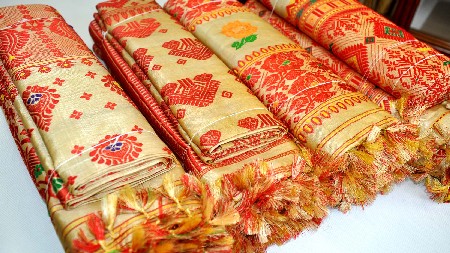
History & Origin
Muga Silk has been cultivated and weaved for a long time, according to contradicting reports, but the golden age can be linked to the period between 1228 and 1828, under the reign of the Ahom kings. The Ahom emperors encouraged the development of Muga Silk as a business. They had determined that all of the kingdom’s highest officials would wear only Muga Silk garments. Many of Muga Silk’s looms were known as Rajaghoria looms since they were under royal control.
Since 2007, Muga silk has been designated as a Geographical Indication (GI), and the Assam Science Technology and Environment Council has recognized the mark for authentic manufacturing. Muga silk products are inspected by the Central Silk Board of India, which certifies their authenticity and allows traders to use the GI brand.
Process Of Fabricating Muga Silk
If a silk farmer needs to cultivate roughly 400 kilos of Muga silk at a time, he usually needs at least an acre of land. Furthermore, 1000 cocoons produce approximately 125 grams of silk, when a single saree requires at least 1000 grams. From growing the silkworm to receiving the finished product, a single Muga silk saree takes about two months to weave. The weaving process takes between one and ten days to complete.
The Garo community is primarily responsible for the manufacture of Muga Silk. Miss Vivian Sangma deserves particular recognition. She founded a post cocoon silk factory at Tura in Assam’s west Garo hills, where the full silk production process from cocoon to yarn to final cloth takes place. The Central Silk Board of the Government of India has awarded her company the Silk Mark Certification.
What Distinguishes Muga Silk From Others?
One of the most distinguishing characteristics of Muga silk is its golden color and luster, which sets it apart from other materials. Indeed, the fabric’s sheen is supposed to enhance with each wash, making it a product that will last a lifetime while also being one of the most expensive silks on the market.
The traditional Assamese women’s clothing, the Muga Mekhela Chador, is still one of the most sought-after fashion pieces among locals.
Varieties
The most common types of this cloth are Mekhela chadors, a two-piece saree and the traditional Assamese women’s dress, which is typically worn at weddings, and the five-yard saree. Silk is also available in the form of “reeha,” a piece of fabric worn on important occasions such as pujas, marriages, and festivals. Muga silk is also used to make shawls and fabric for dresses.
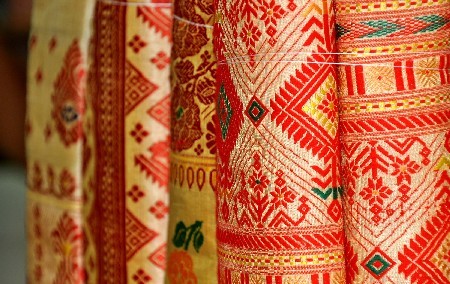
Designs
Rich needlework in the form of flowers, leaves, trees, and Bihu structures adorns dresses made of this Silk, giving them a one-of-a-kind and fantastic appearance. The traditional use of this Silk has been to construct kurtas for men and mehelka – Sadar for ladies, which is similar to a saree in Assam.
Some Beautiful Examples Of Muga Silk Sarees
This is one of the most beautiful silk sarees you will ever see and all thanks to its color. It has a very attractive pattern in the pallu section, and the design is not overly elaborate, so it may be worn by both young and mature women. The artistic pattern is plain, yet it can impress a large audience despite its simplicity.
In front of all the other women wearing sarees, this saree will make you stand out. No matter where you wear this saree, you will look like the most beautiful woman.
This is a piece that can be worn casually as well as for important occasions. This saree features a stunning design that runs the length of the body, which is its main attraction. When you wear this saree, you will appear to be a divine goddess.
This would be one of the best-looking designer materials of all time if you need an Assam silk saree. The pattern employed in its creation is quite lovely, and a woman will be able to wear it to special occasions such as weddings.
This is a lovely Assam silk saree with the year’s most aesthetic and classic black-colored design. This type of saree will surely cover up your family get-togethers and serve a classic look for your evening parties
These are some of the most beautiful Assam silk saree designs you may choose from without hesitation. The goal is to appear your best at the next gathering you attend, and this Assam silk will certainly help you achieve that goal!
Other Articles:-
